Filling in the Blank Spaces Through the Eyes of Exhibition Coordinator Sara England
by Sarah England
January 16, 2018
Sara Nicole England is an MA candidate in Art History at Concordia University and Research Assistant at Obx Labs/AbTeC/IIF. Her thesis research examines public displays of labour in turn-of-the-twentieth-century industrial tourism in the United States. Sara is part of KAPSULA Magazine, a digital publication and online platform for critical and experimental writing. She has a BFA in Criticism and Curatorial Practice from OCAD University in Toronto, Ontario.
***
I joined AbTeC last June to assist with the coordination of Filling in the Blank Spaces, the first-ever retrospective of the research and creative work of AbTeC held at the Leonard and Bina Ellen Gallery from November 4th to December 2nd, 2017. I came to this project with an interest in AbTeC’s collaborative approaches and the ways technologies and media were being remixed, modified and, sometimes, created from the ground up to strengthen and complement Indigenous cultures and communities. Taking part in Indigenous-led projects is an important part of situating my research and myself as an academic and settler on unceded Indigenous lands; I’m grateful for the opportunity to be part of the amazing work of AbTeC.
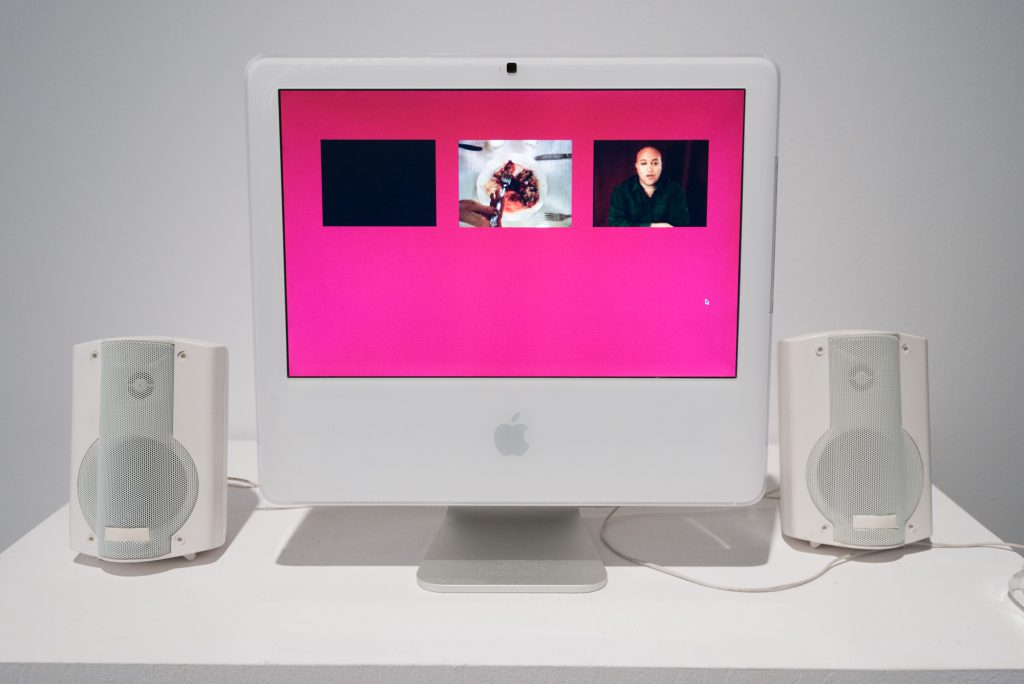
Mounting an exhibition of over twenty years of media production was no small feat! I started the project with what any art historian would do: I referred to Concordia’s library and online databases to research examples and methods of curating new media and digital art. Texts by Sarah Cook, Christiane Paul, Beryl Graham, and Sara Diamond, and projects like CRUMB (Curating Resource for Upstart Media Bliss) laid out the landscape of cyber culture and digital art curating in the 1990s and early 2000s, and offered a theoretical framework for thinking through modes of participation in media art exhibitions.
I quickly learned that the history of new media production moves fast—really fast—and I wasn’t going to find an exhibition model or guidebook that provided all the answers or accounted for the breadth of AbTeC’s experimentation with media; even within the short span of a decade, curatorial models for digital art were often outdated by the time they were published. Relatedly, the term “new media” has stayed the same but the practices that it defines are continuously expanding and evolving; indeed, what we group under the umbrella of new media, and the curatorial strategies for its display, is ever expanding too. Continuous experimentation may be the connecting thread.
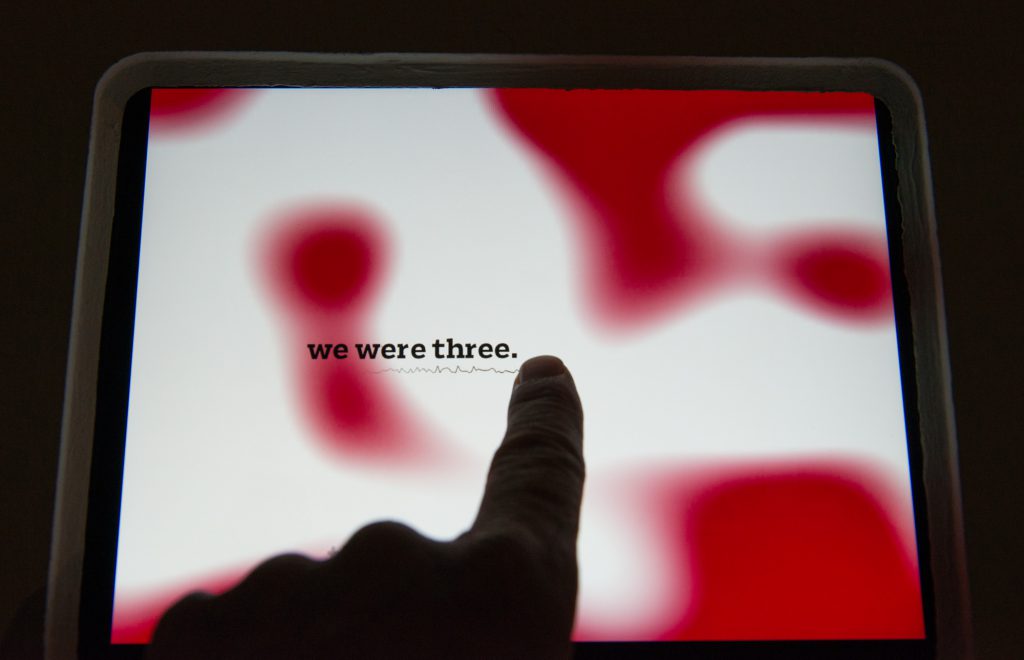
The research and creative work featured in Filling in the Blank Spaces maps out a history of new media in and of itself, with Indigenous artists, academics, technologists and others, at the forefront. For example, the pioneering project CyberPowWow (1997-2004) was one of the first ever online art galleries, combined with a chat room, and incorporating live events that later would be termed “mixed-reality” events. Jason Edward Lewis and Skawennati’s Thanksgiving Address: Greetings to the Technological World (2002) was made with Flash, a nearly defunct application. Listening to it today, the artists remarked on how bad sound compression was at the turn of the millenium. “I sound like I have a lisp!” said Skawennati. The exhibition presents AbTeC’s present-day work, too: Activating AbTeC Island (an open invitation to visit AbTeC’s virtual land in Second Life) (2008-2017) expands some of the ideas first explored in CyberPowWow while computer games produced in the Skins Workshops use new media techniques like modding to bring Indigenous storytelling and representation to game culture; Virtual Reality works by Scott Benesiinaabandan and Postcommodity created in AbTeC’s artist residencies and Illustrating the Future Imaginary (a series of postcards with artwork by Indigenous artists) imagine our world seven generations into the future. AbTeC’s dedication to thinking about the future means that AbTeC is not only part of a history of media history, but also defining and creating its future.
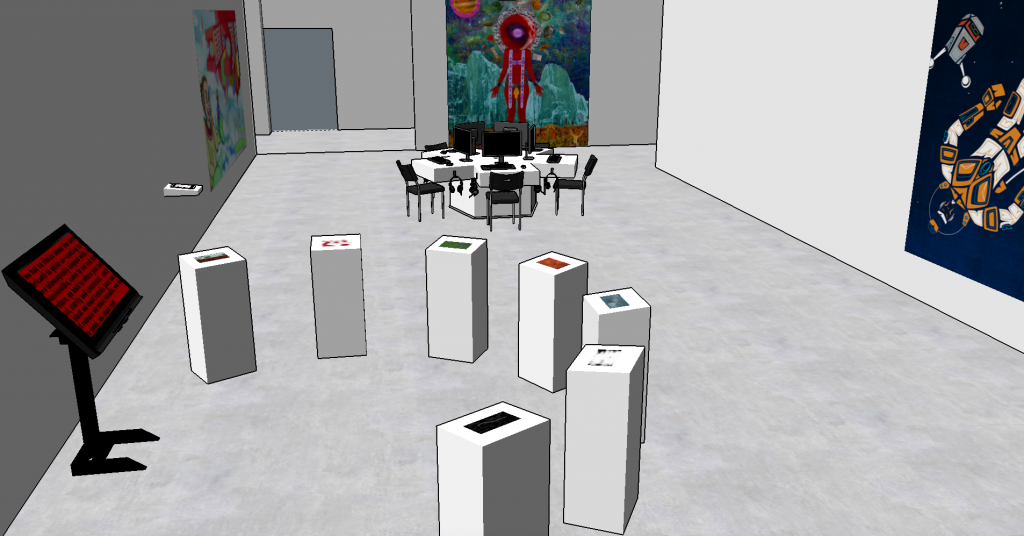
So, we made up the rules as we developed the show. To be sure, there are guiding questions that emerge with any exhibition, especially an interactive and largely virtual one: how will visitors move through the space? How do we get visitors to interact and engage critically and with curiosity? And more specific to the nature of this exhibition: how do we get visitors to recognize the layers of intervention, production, and collaboration when their interactions are mostly at the level of the interface? How do we invite—and empower—visitors to become “users,” “players,” and, in certain instances, “decision makers?”
One of the aspects of Filling in the Blank Spaces that I found interesting is how it acknowledged a material history of technology. In New Media in the White Cube and Beyond, Jon Ippolito writes, “… new media art can survive only by multiplying and mutating.” In some instances, mutation and multiplication were built into the works. Poetry for Excitable [Mobile] Media (P.o.E.M.M.) (2007-2014), a series of interactive and digital poems by Lewis, was an experiment in how digital texts perform across multiple screens and how these interactions between text and device dictate different modes of readership and bodily engagement. In other cases, the artwork had outlived its media and thus required new hosts. CyberPowWow ran as a “canned version,” meaning it operates offline, and was displayed on a virtualized Windows XP program, which ran off a globular iMac G4. The layers of intervention, here, mark a history of technological changes and reveal relations between new and old media in order to contextualize the technological milieu in which CyberPowWow was created.
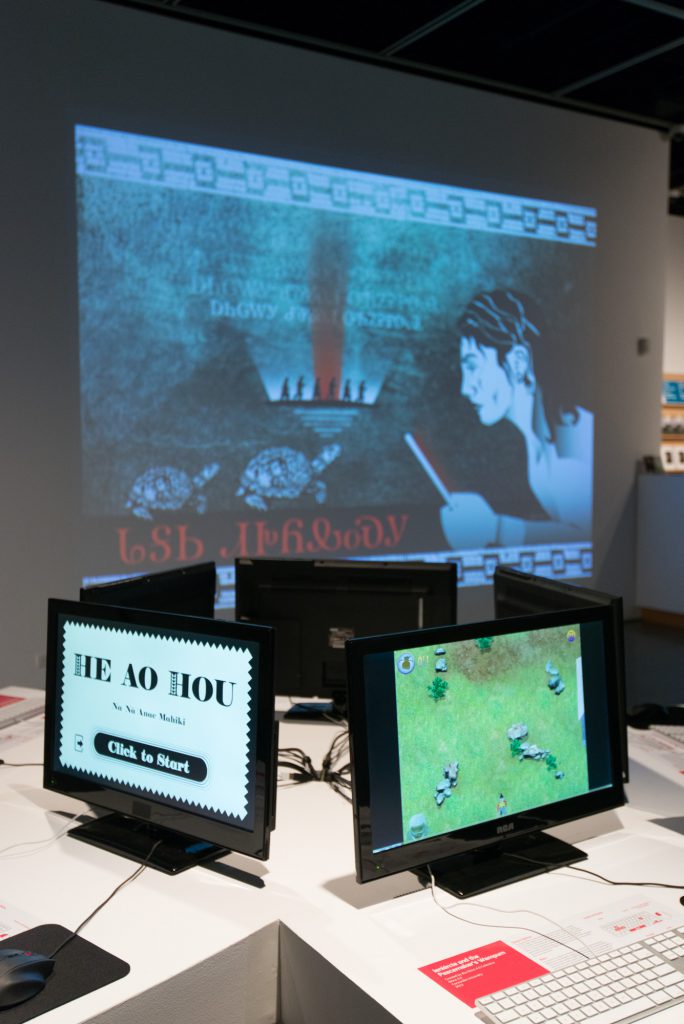
Imagining Indians in the 25th Century (2001), a website that imagines a character who visits significant moments in Indigenous history—created by Skawennati before the age of tablets and touchscreens—was displayed on an iPad in the exhibition. Most of the works in the exhibition behaved independently from their media or means of display. I think this is a valuable curatorial strategy—working without consistency across old and new media—as a way to get people to think beyond the interface and develop a media awareness that attends to both the material and immaterial components of media art. As a form of media literacy, the strategy is not apart from the aims of AbTeC.
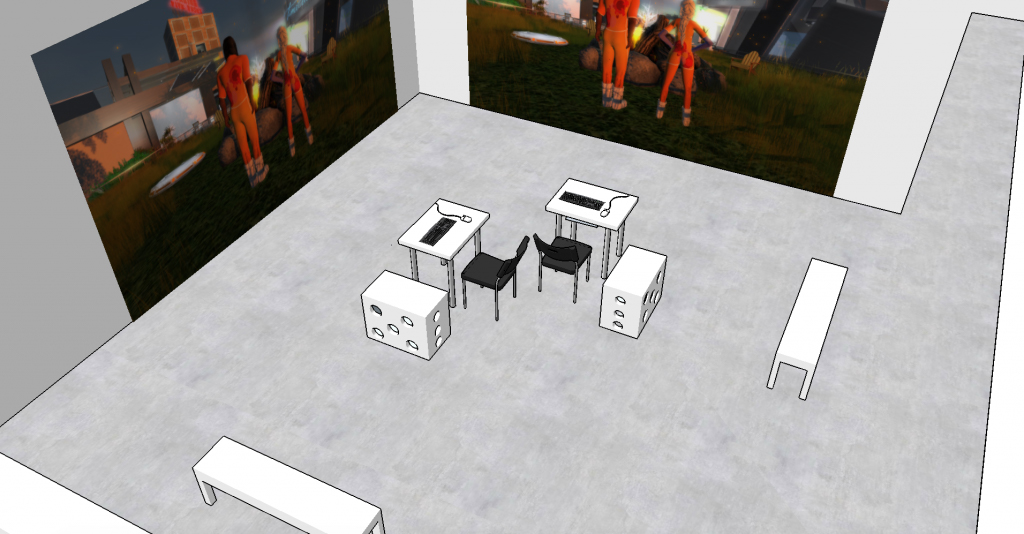
For much of the exhibition I also acted as a docent in the gallery, introducing visitors to the work, assisting them with questions, and, most importantly, encouraging them to interact with the various components. This experience was gratifying because I was able to witness and take part in people’s experiences with and responses to the retrospective. I learned that many visitors often needed an invitation to touch the works and to participate fully in the experience. Despite the relative ubiquity of the technology used in the show, this further demonstrated the uniqueness of the exhibition.
The exhibition asked visitors to think about their expectations of a gallery and how artwork should perform. It required active engagement rather than passive viewership (though I’m inclined to think all artwork asks for active participation) and people had to do the work.

Many did! It was amazing to see visitors, who had never played a computer game before, defeat the evil archaeologist in Ienién:te and the Peacemaker’s Wampum or express wonder when they discovered that their avatar could fly in Activating AbTeC Island, the gallery installation of AbTeC’s virtual land in Second Life. Creating the circumstances for discovery and surprise, for me, is the main goal of exhibition production, and I think we pulled it off!
Jason and Skawennati engaged with me as a collaborator, encouraging creative input and providing ample time and significant resources for me to ask questions, learn about their practices, and flesh out ideas. During this time I was also able to learn how to use the computer-modeling program SketchUp to plot exhibition layouts. Some of the images you can see here.
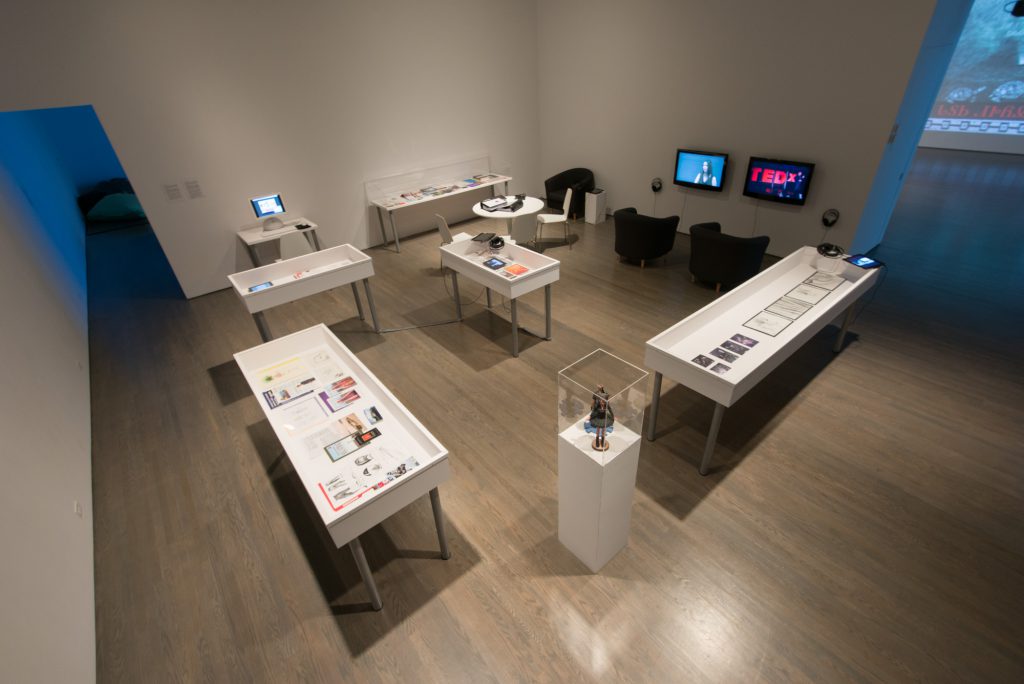
Like all of AbTeC’s projects, many people contributed to the making of the exhibition: among many other contributors, Mikhel Proulx added an archival and historical component to the exhibition by organizing an archive section and writing an exhibition essay; Sabine Rosenberg made the technical magic possible; Valerie Bourdon designed the beautiful exhibition title and vinyl game instructions; Roxanne Sirios and Nancy Townsend designed a visitor-friendly environment within the virtual land AbTeC Island and even created AbTeC avatars for visitors to inhabit; and a team of research assistants activated the exhibition as gallery docents and led the workshop series. Filling in the Blank Spaces is the result of years of dedicated artistic production, research, and collaboration. The making of the exhibition reflects that process, and was made possible by the contributions of an enthusiastic and imaginative team at AbTeC. I can’t wait for what’s next!
Notes
1. Jon Ippolito, “Death by Wall Label,” ed. by Stephanie Fay and Christiane Paul in New Media in the White Cube and Beyond, ed. by Christiane Paul (Berkeley, Los Angeles, London: University of California Press, 2008), 106.